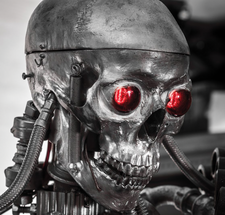Video surveillance with the Raspberry Pi
Eye in the Pi

© Lead Image © svedoliver, 123RF.com
Set up a professional video surveillance system armed with motionEyeOS and a Raspberry Pi.
Theft, vandalism, and property damage are commonplace occurrences today. Police investigations into such cases often come up empty, and the culprits escape undetected and unpunished. As a result, sales of video surveillance systems consisting of several cameras and a video recorder are booming. Here, I show you how, armed with just a Raspberry Pi and motionEyeOS, you can catch the culprits in the act.
Thanks to inexpensive IP and USB cameras, you can find numerous software packages for the home that can be used to upcycle a computer into a full-fledged video surveillance system. However, these solutions all have a serious disadvantage: They have to run constantly and require a correspondingly large amount of energy.
Professional surveillance cameras are bulky and usually attached by a cable to a control unit; just cutting the data cable will disable the camera. Video surveillance with the Raspberry Pi and the motionEyeOS [1] free operating system, on the other hand, is simple, less conspicuous, and less expensive.
[...]
Buy this article as PDF
(incl. VAT)
Buy Linux Magazine
Subscribe to our Linux Newsletters
Find Linux and Open Source Jobs
Subscribe to our ADMIN Newsletters
Support Our Work
Linux Magazine content is made possible with support from readers like you. Please consider contributing when you’ve found an article to be beneficial.

News
-
Manjaro 26.0 Primary Desktop Environments Default to Wayland
If you want to stick with X.Org, you'll be limited to the desktop environments you can choose.
-
Mozilla Plans to AI-ify Firefox
With a new CEO in control, Mozilla is doubling down on a strategy of trust, all the while leaning into AI.
-
Gnome Says No to AI-Generated Extensions
If you're a developer wanting to create a new Gnome extension, you'd best set aside that AI code generator, because the extension team will have none of that.
-
Parrot OS Switches to KDE Plasma Desktop
Yet another distro is making the move to the KDE Plasma desktop.
-
TUXEDO Announces Gemini 17
TUXEDO Computers has released the fourth generation of its Gemini laptop with plenty of updates.
-
Two New Distros Adopt Enlightenment
MX Moksha and AV Linux 25 join ranks with Bodhi Linux and embrace the Enlightenment desktop.
-
Solus Linux 4.8 Removes Python 2
Solus Linux 4.8 has been released with the latest Linux kernel, updated desktops, and a key removal.
-
Zorin OS 18 Hits over a Million Downloads
If you doubt Linux isn't gaining popularity, you only have to look at Zorin OS's download numbers.
-
TUXEDO Computers Scraps Snapdragon X1E-Based Laptop
Due to issues with a Snapdragon CPU, TUXEDO Computers has cancelled its plans to release a laptop based on this elite hardware.
-
Debian Unleashes Debian Libre Live
Debian Libre Live keeps your machine free of proprietary software.

